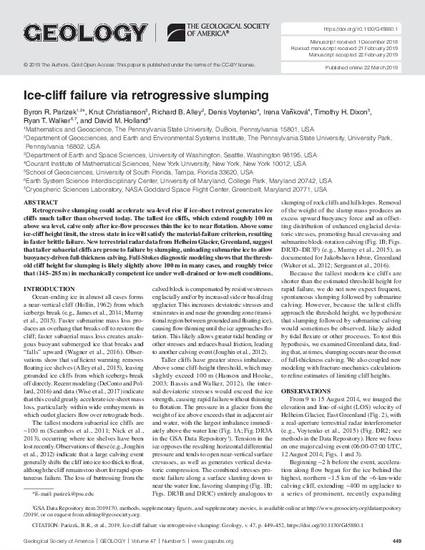
Retrogressive slumping could accelerate sea-level rise if ice-sheet retreat generates ice cliffs much taller than observed today. The tallest ice cliffs, which extend roughly 100 m above sea level, calve only after ice-flow processes thin the ice to near flotation. Above some ice-cliff height limit, the stress state in ice will satisfy the material-failure criterion, resulting in faster brittle failure. New terrestrial radar data from Helheim Glacier, Greenland, suggest that taller subaerial cliffs are prone to failure by slumping, unloading submarine ice to allow buoyancy-driven full-thickness calving. Full-Stokes diagnostic modeling shows that the threshold cliff height for slumping is likely slightly above 100 m in many cases, and roughly twice that (145–285 m) in mechanically competent ice under well-drained or low-melt conditions.
Geology, v. 47, issue 5, p. 449-452
© 2019 The Authors. Gold Open Access: This paper is published under the terms of the CC-BY license.
Available at: http://works.bepress.com/timothydixon/187/
